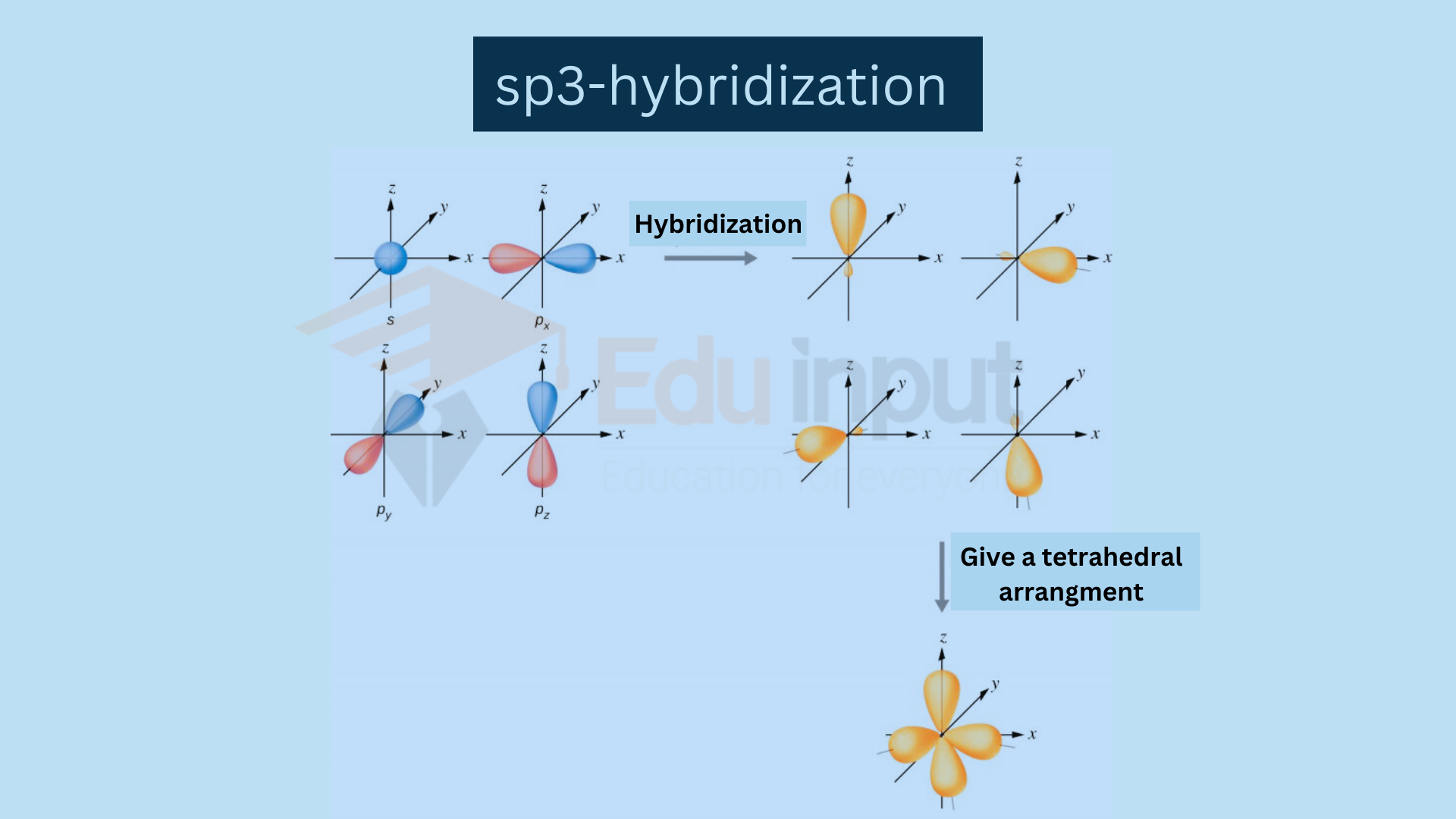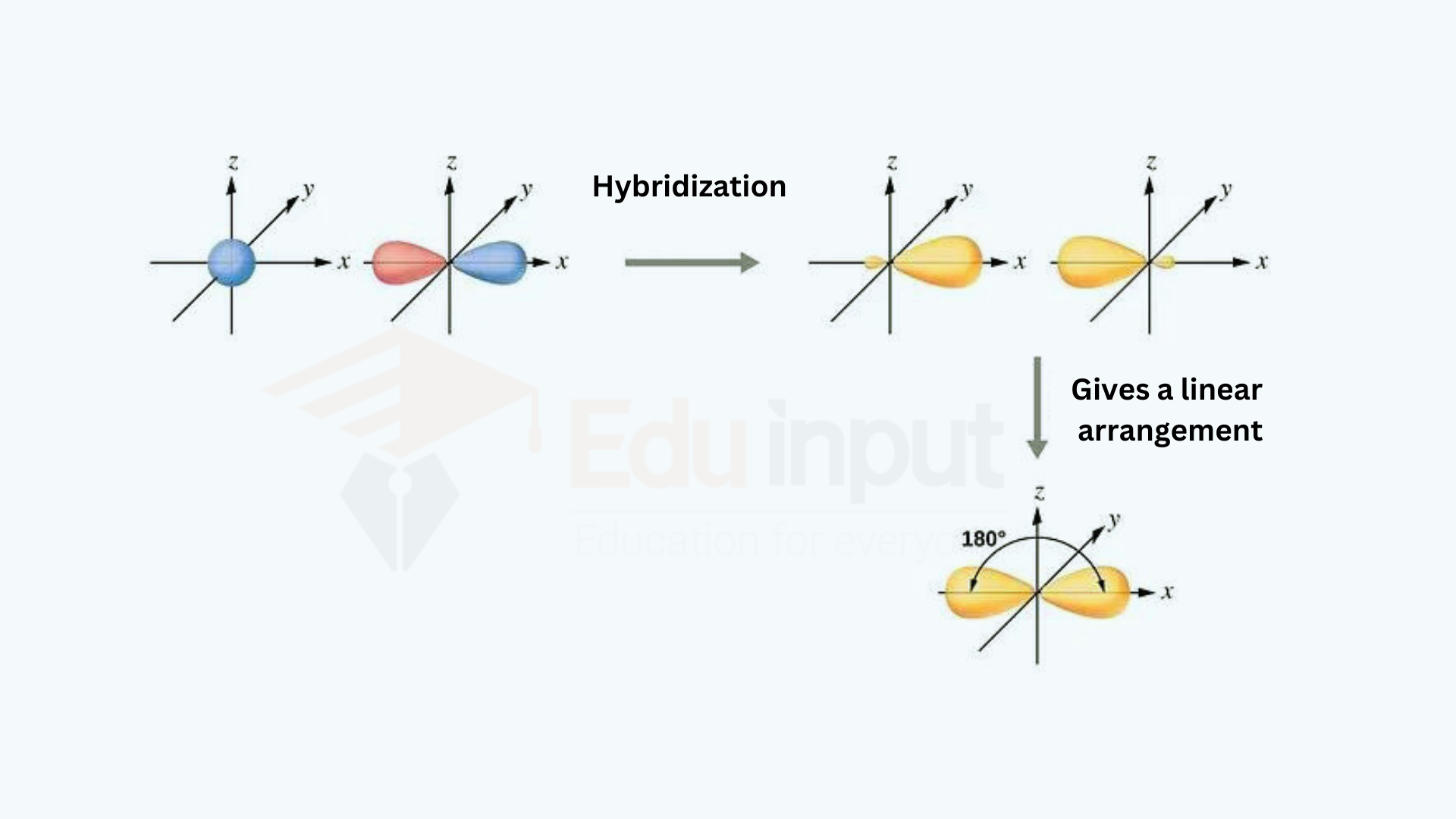Electron Affinity, definition, examples, significance, factors, periodic trend
The amount of energy released when an electron is added in the lowest energy state of an isolated gaseous atom to form an anion is called the electron affinity of the element.
What is Electron Affinity?
Electron affinity is the energy change that occurs when an electron is added to a neutral atom to form a negatively charged ion (anion). It is a measure of the tendency of an atom to attract and accept an additional electron. Electron affinity is usually expressed in units of energy, such as kilojoules per mole (kJ/mol) or electron volts (eV).
Examples of electron affinity
- Cl(g) + e⁻ → Cl⁻(g) ΔH (-349 kJ/mol)
- F(g) + e⁻ → F⁻(g) ΔH (-328 kJ/mol)
Some atoms have more than one value of electron affinity like oxygen.
- O(g) + e⁻ → O⁻(g) + 141 kJ/mol ΔH (-141 kJ/mol)
- O⁻(g) + e⁻ → O²⁻(g) + 841 kJ/mol ΔH (+ 841kJ/mol)
The second electron affinity of oxygen is positive. The second electron affinity is typically positive because it involves adding an electron to an already negatively charged ion (anion). This process requires overcoming significant electrostatic repulsion between the incoming electron and the existing electrons in the ion. The additional electron enters an environment of increased electron density, leading to a net energy input, resulting in a positive electron affinity value.
Periodic Trend
Trends of electron affinity in the periodic table are given below:
Variation in Periods
Across a period on the periodic table, electron affinity generally increases from left to right. This trend is attributed to the increasing nuclear charge and decreasing atomic size.
Explanation
As we move across a period from left to right, the atomic number increases, resulting in a higher nuclear charge. This increased nuclear charge exerts a stronger pull on the electrons in the outer shell, thereby increasing the electron affinity. Additionally, the atomic size decreases across a period due to the increasing number of protons in the nucleus, leading to stronger electron-nucleus attraction and thus higher electron affinity.
Variation in Groups
Within a group (vertical columns) on the periodic table, electron affinity generally decreases as you move down the group. This trend is primarily influenced by the increasing atomic size.
Explanation
As we move down a group, the number of electron shells increases, leading to a larger atomic size. With larger atomic sizes, the outermost electrons are farther from the nucleus, experiencing weaker attraction. Consequently, atoms lower in the group have lower electron affinities because they are less likely to attract additional electrons compared to atoms higher in the group.
There are some exceptions to this generalization, e.g., fluorine has less electron affinity than that of chlorine. As fluorine is more electronegative than chlorine, therefore, its electron affinity is lower. This is due to fluorine’s smaller size.
The tightly packed electrons in fluorine experience stronger repulsion against an incoming electron, reducing the energy released upon gaining it, leading to a lower electron affinity compared to the larger chlorine atom.
Factors affecting Electron Affinity
Electron affinity, the ability of an atom to attract electrons, is influenced by several key factors. Some of them are given below.
| Factor | Relationship | Example |
| Nuclear Charge (Z) | Directly proportional (+) | Chlorine (Cl): High Z (17) leads to high electron affinity. |
| Atomic Size (r) | Inversely proportional (-) | Beryllium (Be): Larger size results in lower electron affinity. |
| Shielding Effect | Indirectly proportional (-) | Noble gases: Strong shielding leads to very low or negative electron affinities. |
| Electron-Electron Repulsion | Variable (-) | Oxygen (O): Second electron affinity is positive due to repulsion. |
| Electronic Configuration | Varies depending on configuration (-) | Fluorine (F): Nearly filled shell leads to high electron affinity. |
1. Atomic Size:
The size of an atom plays a significant role in its electron affinity. Atomic size is inversely related with atomic size. Generally, larger atoms have lower electron affinities because their outermost electrons are farther from the nucleus. This means that the attraction between the nucleus and the incoming electron is weaker, making it less likely for the atom to accept additional electrons.
2. Nuclear Charge:
The strength of the positive charge in an atom’s nucleus, often referred to as nuclear charge, affects its electron affinity. Nuclear charge is inversely related with electron affinity. Atoms with higher nuclear charges have greater attractions for electrons, leading to higher electron affinities. This is because the increased positive charge pulls the electrons closer to the nucleus, making it easier for the atom to accept additional electrons.
3. Electron Configuration
The arrangement of electrons in an atom’s energy levels, known as its electron configuration, can impact its electron affinity. Atoms with incomplete outer electron shells (valence shells) tend to have higher electron affinities as they strive to attain a stable electron configuration. Conversely, atoms with full valence shells, such as noble gases, typically have low electron affinities since they are already stable and less likely to accept additional electrons.
4. Shielding Effect
The shielding effect refers to the phenomenon where inner electron shells partially shield the outer electrons from the full effect of the nucleus’s positive charge. Atoms with more electron shells experience greater shielding, reducing the effective nuclear charge felt by the outer electrons. As a result, the electron affinity may decrease since the attraction between the nucleus and the outer electrons is weakened.
5. Electron Repulsion
Electron-electron repulsion also influences electron affinity. When an atom gains an additional electron, it introduces more negative charge into the atom, leading to increased repulsion between electrons. This repulsion can counteract the attractive force between the nucleus and the incoming electron, affecting the atom’s overall electron affinity.
Steps to Calculate Electron Affinity
Understand the Process
Recognize that electron affinity involves adding an electron to a neutral atom to form a negatively charged ion.
Identify the Given Values
Identify the given enthalpy change (ΔH) for the electron affinity process.
Use the Definition of Electron Affinity
Apply the equation EA = −ΔH to calculate the electron affinity.
Include Units:
Ensure that the units are consistent. Typically, electron affinity is reported in units such as kilojoules per mole (kJ/mol).
Keep in mind that electron affinity is an experimentally determined value and can vary for different electron addition processes (first, second, etc.). The sign of the electron affinity value indicates whether the process is exothermic (negative) or endothermic (positive).
Significance of Electron Affinity
The electron affinity of an element is a significant parameter in understanding its chemical behavior and reactivity. Here are some key aspects that highlight the significance of electron affinity:
Chemical Reactivity
Electron affinity is a measure of an element’s ability to accept an additional electron to form a negative ion (anion).
Elements with high electron affinity are more likely to gain electrons during chemical reactions, contributing to the formation of negatively charged ions.
Formation of Anions
Elements with a high electron affinity readily form anions by accepting electrons. For example, halogens (Group 17 elements) have high electron affinities and readily form halide ions (e.g., Cl⁻, F⁻).
Ionic Bonding
In ionic bonding, the combination of elements with significantly different electron affinities can lead to the transfer of electrons from one element to another.
Elements with high electron affinity are more likely to attract and hold onto electrons, contributing to the stability of anions.

 written by
written by 




Leave a Reply